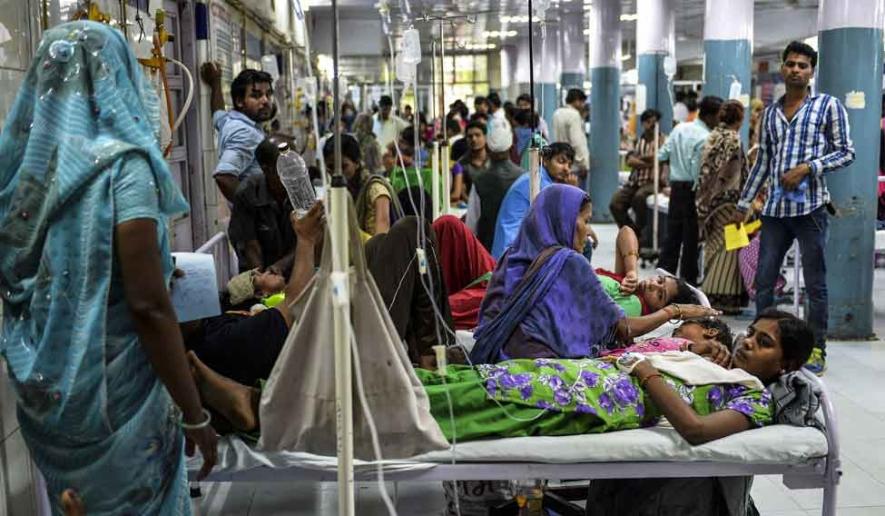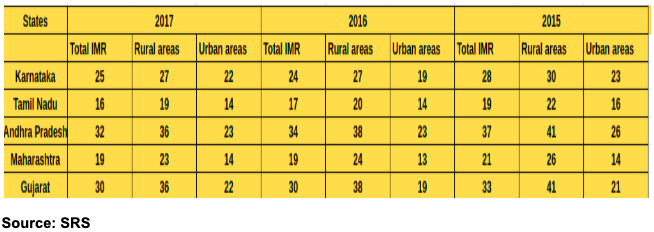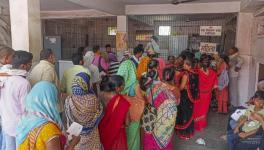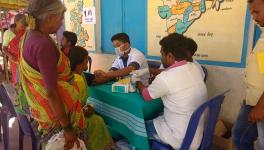Is Urban Health Care Being Neglected?

While on one hand, the Narendra Modi led Bharatiya Janata Party (BJP) government has been making tall claims about its Ayushman Bharat scheme, crucial indicators such as Infant Mortality Ratio (IMR) are showing a deep disparity. The decline in the government’s expenditure on public health system and opening up the health sector to private players has had an adverse impact on IMR. IMR is defined as infant deaths per 1000 live births in a given time period and for a given region.
As Oommen C. Kurian and Rakesh Kumar Sinha write in The Wire, “Even though the IMR at pan India level has been declining, as an Indiaspend report explained, India’s IMR in 2017 remained higher than the global 29.4, a rate equivalent to that of the West African nation of Senegal and higher than most South Asian neighbours’ except that of Pakistan and Myanmar.” There certainly is a decline in the IMR at pan India level. However, the story is different state wise. Examining the data in Sample Registration System (SRS) closely for the “advanced” states, it can be seen that there exists a disparity in the trend of the changing IMRs between the rural and urban areas. The decline is seen mainly in the rural areas, while even in highly urbanised states like Tamil Nadu and Gujarat, the IMR either shot up in 2017 or showed stagnation.
Also Read: Lack of Infrastructure in Govt Hospital NICUs in Peripheral Regions
Infant Mortality Rate (IMR) has risen by a point in the state of Karnataka, from 24 to 25 in 2017, according to the Sample Registration System (SRS) 2017. The state had successfully brought down IMR from 28 in 2015 to 24 in 2016, as per a report by The Hindu. According to this report, “Despite this (rise), Karnataka’s IMR is better than the country’s average, which is 33 infant deaths per thousand live births in 2017.” However, there was another report in 2017 which said, “The numbers across Karnataka show that the backward districts in north Karnataka continue to witness the highest number of infant deaths.” According to the health department’s data, the IMR in the northern parts of the state still remains high.

As seen in the above table, from 2015-2017, the total IMR has been declining. However, as mentioned earlier, there is one point rise in the total IMR of the state. The IMR in the rural areas has been stagnant. The story of the urban areas in the state is slightly different. IMR declined from 23 in 2015 to 19 in 2016 and has again shot up to 22, i.e. one point less than what it was in 2015 and three points more than what it was in 2016.
Also read: 2.9 million Children in India Missed Out First Dose of Measles Vaccine in 2017
As Kurian and Sinha note, unlike many other states, the IMR estimates from NFHS-4 are very close to the Sample Registration System estimates in Karnataka. IMR in Karnataka for the year 2014-15 is estimated at 28 deaths before the age of one year per 1,000 live births, down from 43 a decade ago. Infant mortality is 35 per 1,000 live births for mothers under legal age of marriage compared with 24 per 1,000 live births for mothers aged 20-29.
In Karnataka, their is a clear increase in the IMR in urban areas. In the neighbouring state of Tamil Nadu, which has much lower IMR the change in the IMR in urban areas has remained stagnant.
In the case of Andhra Pradesh, another neighbouring state, there is a decline in the IMR in urban areas, however, the rate at which it is declining compared to that of in its rural areas is much lower.
Also Read: Assam: 16 Infants Die Over a Week
As in the case of Karnataka, both in Maharashtra and Gujarat, the IMR in urban areas has shot up. Just as observed in the case of Andhra Pradesh, there exists a wide disparity between the rate at which the IMR is declining in rural and urban areas in Maharashtra and Gujarat.
Also read: India Records Decline in Maternal Mortality
This has been the trend for the last couple of years. The IMR has been declining only in rural areas. The data above shows the trend of IMR in the five highly urbanised states, i.e. Karnataka, Tamil Nadu, Andhra Pradesh, Maharashtra and Gujarat. As Dr. Sundarraman of the Jan Swasthya Abhiyan (JSA) told NewsClick, “Even though the increase in the IMR is not a lot, it has been stagnating in the urban areas.” In Karnataka, 31.5% of the total population live in urban areas; 48.40% in Tamil Nadu; 29.6% in Andhra Pradesh; 45.23% in Maharashtra and 42.60% in Gujarat live in urban areas. The question then arises, why is the IMR remaining stagnant in urban areas even in these urbanised and “advanced” states.
The key to the decrease in the IMR is the higher public investment in health. As a research report in the Livemint shows, since public investment in health in the country had increased, the IMR had started to decline. “This improvement in IMR has coincided with an improvement in public health spending, and the rollout of a National Rural Health Mission (NRHM) focusing on the healthcare needs of under-served rural areas in 2005. Despite leakages, the mission helped set up rural health infrastructure in areas where it was non-existent earlier, and helped raise a cadre of community health workers (ASHA workers) who worked as the frontline staff of the mission in improving health outcomes, especially of women and newborns.” The SRS data, too, shows that there has been a constant decline in the IMR in rural areas.
Also Watch: Very Poor Implementation of Schemes on Public Health Nutrition: Vandana Prasad
Gargeya Telakapalli of JSA points out that the urban health sector is left to mainly private sector. Sundarraman explained, “The failure to invest in urban primary health care and stagnating funding of National Urban Health Mission (NUHM) is reflected in these stagnating indices.” Telakapalli added, “Compared to its counterpart the NRHM, NUHM has been a failure of sorts. A reason for this does not lie only in the health departments, but also in the overall breaking down of the countries civic bodies. Currently, urban health care is in a state of chaos.” In its budgetary allocation till 2018, the government did not make NUHM a priority, resulting in the weakening of public health systems in these regions.
Get the latest reports & analysis with people's perspective on Protests, movements & deep analytical videos, discussions of the current affairs in your Telegram app. Subscribe to NewsClick's Telegram channel & get Real-Time updates on stories, as they get published on our website.
























